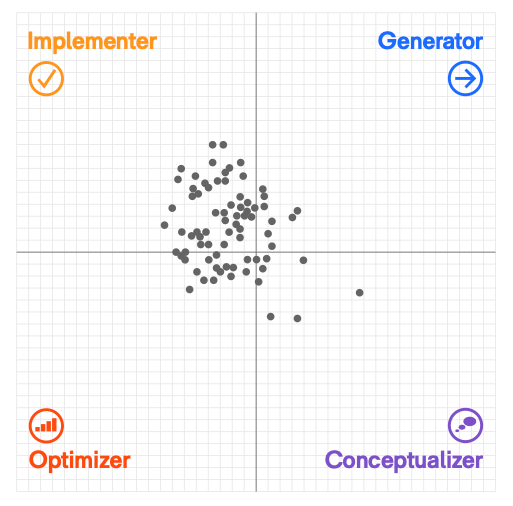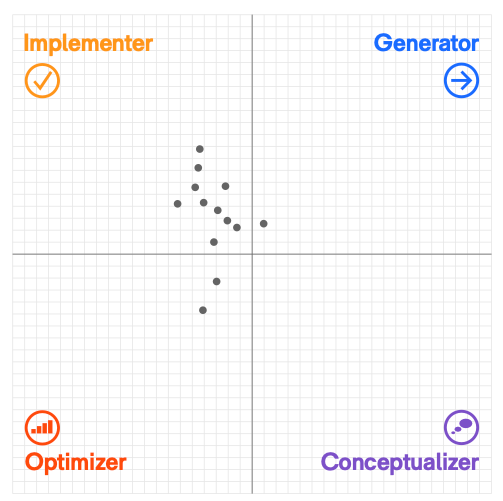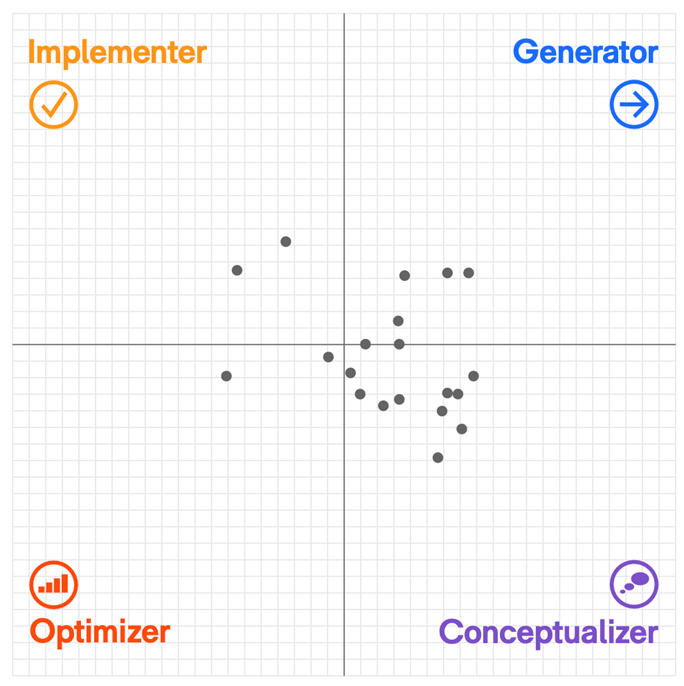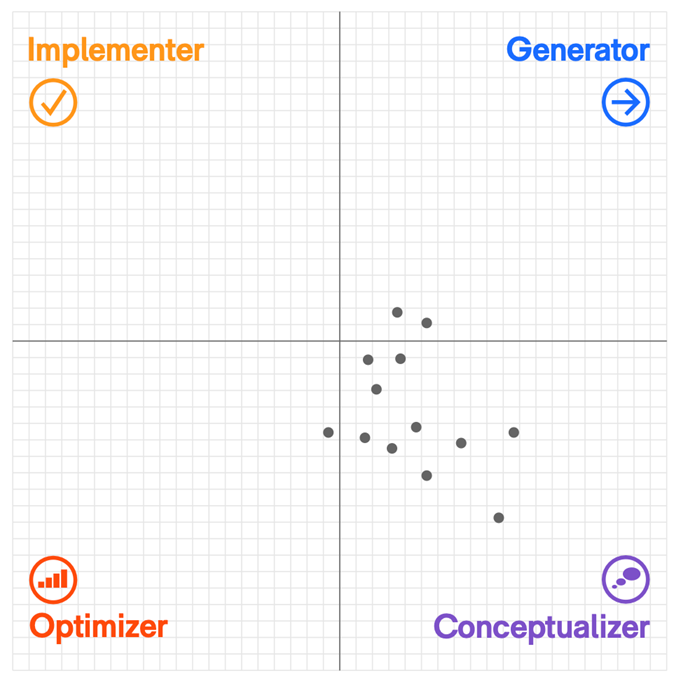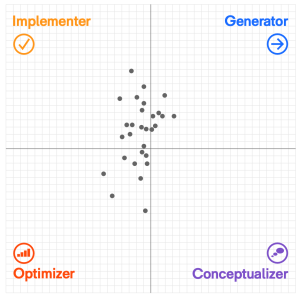Leveraging Cognitive Diversity: The Entrepreneurship and Venture Capital Association
Not surprisingly, entrepreneurs and venture capitalists trend strongly toward the first stage of the innovation process, generation, and learning through direct experience (their dots are largely on top of the grid). However, running a successful business involves much more than simply coming up with an idea and implementing it. This group needs conceptualizers and optimizers – the people who tend to be more product-focused. Entrepreneurs and startups have to be aware of where they have shortcomings. If this group were an intact team, it might be more focused on jumping from an idea (generation) to a solution (implementation), defining and solving the true customer problem, and product quality might be impacted negatively.
This cohort of MBA students, who were part of a venture capital group, had to learn the complete innovation process to develop their ideas fully. Generators may benefit from partnering with people with different inclinations if starting their own companies. By understanding the innovation process, these students learned the value of all styles.
While this group strongly represented generators, the style is the least common in society. Generators are also highly underrepresented in the business world and often need to be more understood by their colleagues. But while they don’t always fit easily into the corporate world, they can have a significant impact on old-fashioned companies if given an opportunity to offer ideas for new products or markets.
What ideas might you offer these students as they enter the real world?
“You’re an innovator; you just don’t know it yet!” Learn more about the Basadur Profile and how it measures cognitive diversity to help your team achieve innovative results.
Ready to take The Profile?


